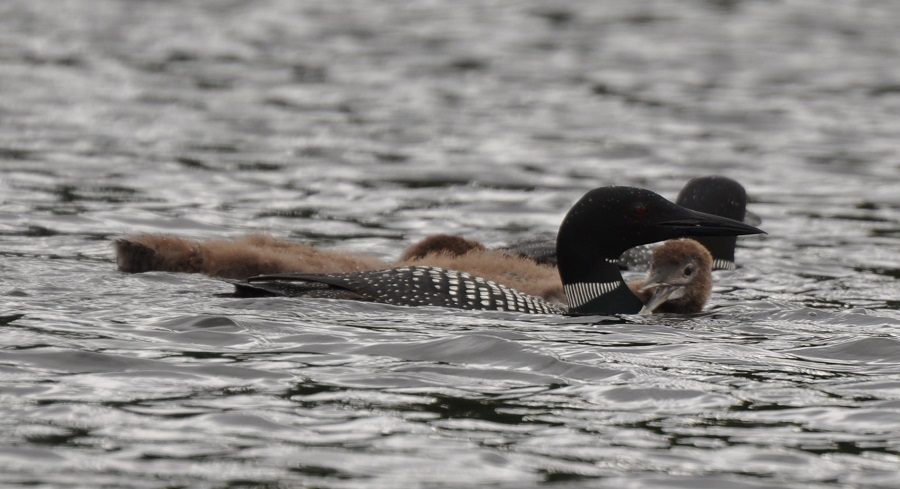This blog comes from Laura Penner, a Discovery Program Group Leader at Rondeau Provincial Park.
As a naturalist and a mother of three, I find great joy in catching rare glimpses of wildlife taking care of their young.
This looks so different from species to species. It could be a female oriole meticulously weaving grasses into an intricate basket-shaped nest, or a Map Turtle digging test nests all over a campsite until she finds the perfect soil composition.
Each species has its own unique way to raise its young that best deals with the challenges in its environment. Let’s take a look at a few interesting ways wildlife care for their young.
Challenges of parenting in the wild
When it comes to wildlife, there are many different strategies used to ensure the success of the following generation.
Raising young requires a great deal of energy. Any parent knows this is true for humans as well!
Many factors come into play when determining the optimum level of energy to put into rearing offspring. These factors can include environmental conditions, predation rates, lifespan of the individual, and clutch size.
Hands-off parenting

Many species of insects and reptiles utilize a “lay and leave” strategy. They find the best possible location for their clutch of eggs, and then leave them to hatch on their own.
In the case of many of our freshwater turtle species, it is the careful choosing of a nest site that will eventually determine the sex of the hatchling turtles.
This has to do with the temperature of the nest. Eggs that are located deeper in the nest hole will develop into males, while those located at the top of the nest will be female.
In these situations, there are usually a high number of eggs laid to offset the high predation rate of the vulnerable hatchlings.
Active parents

Other species take a more active role to ensure those precious eggs survive long enough to hatch.
Meet the Giant Water Bug. This large insect lives up to its name, reaching lengths of 2.5 centimetres or more. You may have encountered them if you’ve ever explored the shallow waters of a marsh, pond, or stream. These predatory insects spend the majority of their lives in the water, but can also be seen circling street lights during the mating season.
Giant Water Bugs are known to eat anything from small fish, to frogs, to insects of all sizes. They do this by injecting the body of their prey with enzymes, which basically turn their insides to goo!
When it comes time to lay the eggs, the female will actually glue eggs onto the male’s back. This offers the perfect protection from predators. The males also keep the eggs from growing mouldy by swimming around, and occasionally allowing the eggs to dry off in the sunlight.
How skinks parent

The Eastern Five-lined Skink is not only Ontario’s only lizard, but another species that chooses to spend more energy to ensure her eggs are well protected until they hatch.
These brightly-coloured lizards will lay their eggs under rotting logs, in compost piles, or under debris. They do this in groups of two or three other egg-laying females — there’s safety in numbers after all!
The females will help guard each other’s eggs from predators, carefully rotate the eggs, and even urinate on them to keep the moisture level just right. If any eggs spoil, the female will quickly eat them to ensure the remaining eggs remain healthy.
Predator parents

With many predatory species, more time and energy are spent rearing the young and teaching them behaviours that will lead to their future success.
Common Mergansers are large, streamlined, diving ducks, and one of the top predators in many aquatic habitats throughout Ontario. Their serrated bills allow them to catch the fish that make up the bulk of their diet.
In the case of the Common Merganser, the males will leave the incubation site shortly after mating. This helps to ensure his mate and future offspring will have less competition in the feeding grounds. The mother leads the young to the water, and watches over them as they hone their instinctual hunting skills.

Nature has many lessons for those who take the time to watch, listen, and learn. In this case, we see that families are unique and diverse. Although these animals raise their young much differently than us, we are all working towards a similar goal in the end.
Take some time to get outdoors with your family and learn from nature. You’ll be surprised at what it can teach you!

